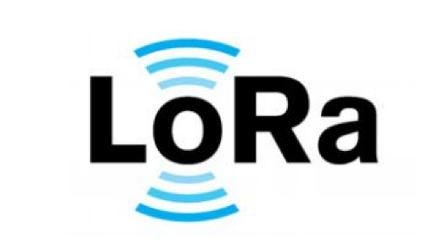New Technologies
IoT Connectivity - Comparison of LoRa, SigFox, RPMA, and other LPWAN Technologies
So you want to use LPWAN for your IoT connectivity, but now what? There are several LPWAN technologies.
So you want to use LPWAN for your IoT connectivity, but now what? There are several LPWAN technologies.
This is the second installment in our series providing the definitive guide to a class of IoT connectivity known as LPWAN (low-power wide-area networks). The first post was an overview of LPWAN, including what it is and the benefits of LPWAN technologies compared to other IoT connectivity options. In this post, we’ll examine the various LPWAN technologies and players in the space.
Ultimately, you’ll know whether LPWAN is right for your IoT application and, if it is, how to best move-forward.
While there are many LPWAN technologies and standards, we’ll be focusing on SigFox, LoRa, RPMA, Symphony Link, and Weightless, because these technologies are under active development or deployment. Although there are other proprietary protocols and stacks such as the Dash7 Alliance Protocol, they haven’t gained as much traction and won’t be covered in this article.
The following sections will provide an overview of each of the LPWAN technologies. In the rest of this series, we’ll devote individual posts to each of the options, taking a deeper dive into the various pros/cons of each and doing a technical drill-down on their underlying technology stacks.

Founded in 2009, SigFox is a French company based in Labège, France. SigFox has arguably the most traction in the LPWAN space (or at least, it’s the most recognizable) due to its successful marketing campaigns in Europe. It also boasts a great ecosystem of vendors including Texas Instruments, Silicon Labs, and Axom.
SigFox uses a proprietary technology, an example of using a slow modulation rate to achieve longer range. Due to this design choice, SigFox is an excellent option for applications where the system only needs to send small, infrequent bursts of data.
Possible applications include parking sensors, water meters, or smart garbage cans. However, it also has some drawbacks. Sending data back to the sensors/devices (downlink capability) is severely limited and signal interference can become an issue.

The LoRa Alliance is an open, non-profit association formed to foster an ecosystem for certain LPWAN technology. It has about 400 member companies throughout North America, Europe, Africa, and Asia, and its founding members include IBM, MicroChip, Cisco, Semtech, Bouygues Telecom, Singtel, KPN, Swisscom, Fastnet, and Belgacom.
LoRaWAN is the open-standard networking layer governed by the LoRa Alliance. However, it’s not truly open since the underlying chip to implement a full LoRaWAN stack is only available via Semtech. Basically, LoRa is the physical layer: the chip. LoRaWAN is the MAC layer: the software that’s put on the chip to enable networking.
The functionality is similar to SigFox in that it’s primarily for uplink-only applications (data from sensors/devices to a gateway) with many end-points. Instead of using narrowband transmission, however, it spreads out information on different frequency channels and data rates using coded messages. These messages are less likely to collide and interfere with one another thereby increasing the capacity of the gateway.

Random Phase Multiple Access (RPMA) is a proprietary LPWAN technology stack developed by Ingenu. The company was founded in 2008 in San Diego, California by former engineers of Qualcomm and was originally named On-Ramp Wireless.
As a founding member of the IEEE 802.15.4k task group (which was dedicated to low-energy infrastructure monitoring), Ingenu put in a tremendous amount of effort in developing RPMA, whereas SigFox and LoRaWAN groups have focused on faster time to market.
Due to its architecture, RPMA has a superior uplink and downlink capacity than other models. It claims to have better doppler, scheduling, and interference robustness. It operates in the 2.4 GHz spectrum, which is globally available (used for WiFi and Bluetooth). This means that there are no architecture changes per region like SigFox and LoRa.
According to its internal studies, RPMA has a significantly higher link budget (177 vs. 149 and 157 for SigFox and LoRa respectively), meaning better coverage.

Link Labs is a LoRa Alliance member and thus uses the LoRa chip mentioned above. However, instead of using LoRaWAN, Link Labs has built a proprietary MAC layer (software) on top of Semtech’s chips called Symphony Link.
Link Labs was founded in 2013 by former members of the Johns Hopkins University Applied Physics Laboratory and is headquartered in Annapolis, Maryland.
Symphony Link adds some important connectivity features compared to LoRaWAN including: guaranteed message receipt, firmware upgrade over-the-air, removal of duty cycle limit, repeater capability, and dynamic range.

Weightless SIG (special interest group) was founded in 2008 with the mission of standardizing LPWANs. There are five “Promotor Group Members” including Accenture, ARM, M2COMM, Sony-Europe, and Telensa.
Weightless is the only truly open-standard that operates in sub-1 GHz unlicensed spectrum. There are three versions of Weightless that serve different purposes:
Weightless-W: leverages whitespace (unused local spectrum in licensed TV band)
Weightless-N: unlicensed spectrum narrowband protocol born out of NWave’s technology
Weightless-P: bidirectional protocol born out of M2COMM’s Platanus technology
Weightless N and P are the more popular options since Weightless-W has a shorter battery life.
Nwave is very similar to SigFox in terms of functionality, but boasts a better MAC-layer implementation. It claims to use “advanced demodulation techniques” to allow its network to coexist with other radio technologies without additional noise. Like SigFox, it’s best for sensor-based networks, temperature readings, tank level monitoring, smart metering, and other such applications.
This standard uses FDMA+TDMA modulation in 12.5 kHz narrow band (greater than SigFox but less than LoRa). It also has an adaptive data rate, similar to Symphony Link (200 bps to 100 kbps). The sensitivity is quite high, -134 dBm at 625 bps and supports both PSK and GMSK modulation.
Weightless-P makes sense for private networks, more sophisticated use cases, and cases in which controlling uplink data and downlink data is important. Development kits for Weightless-P are just starting to come to market now.